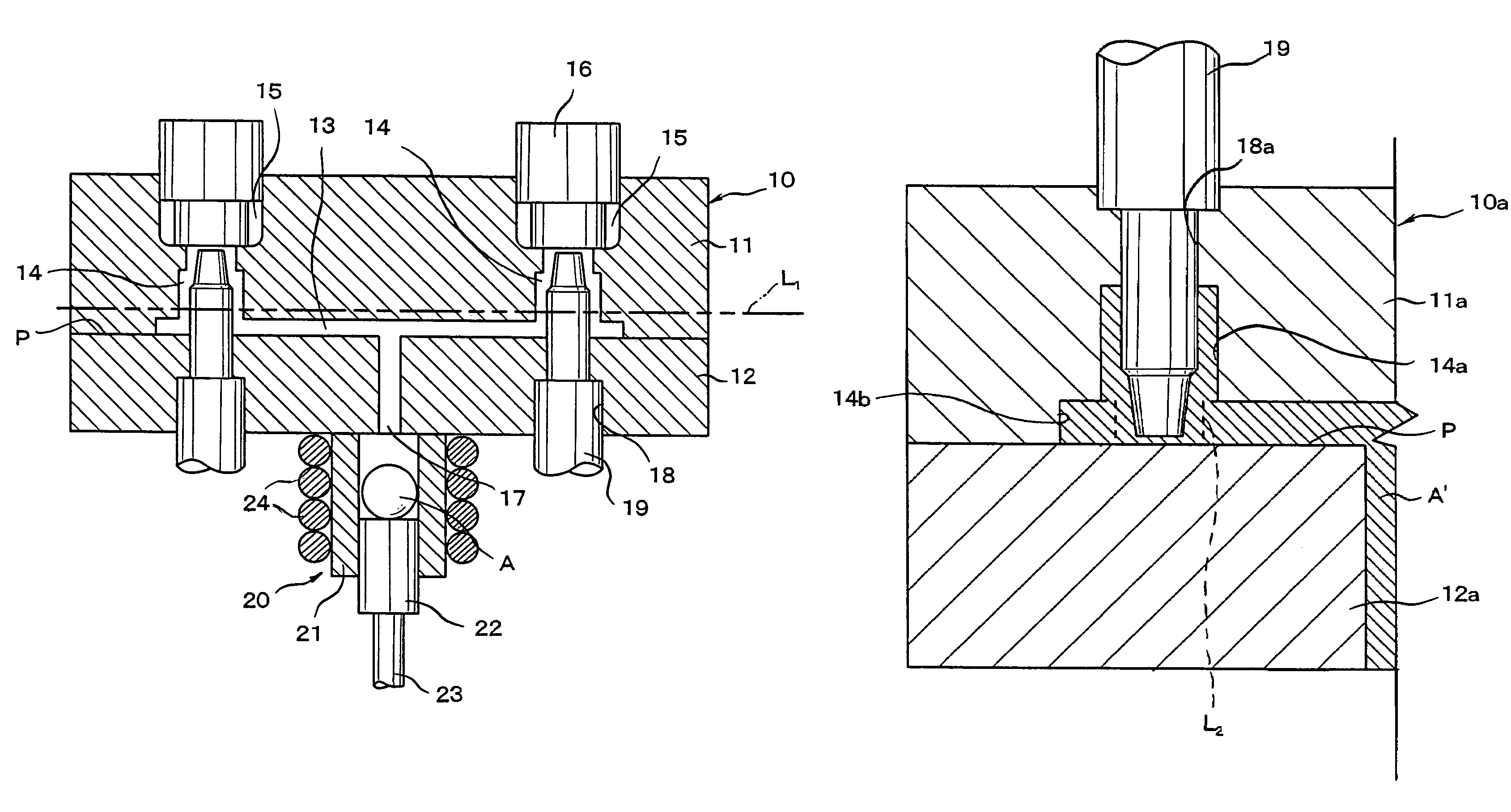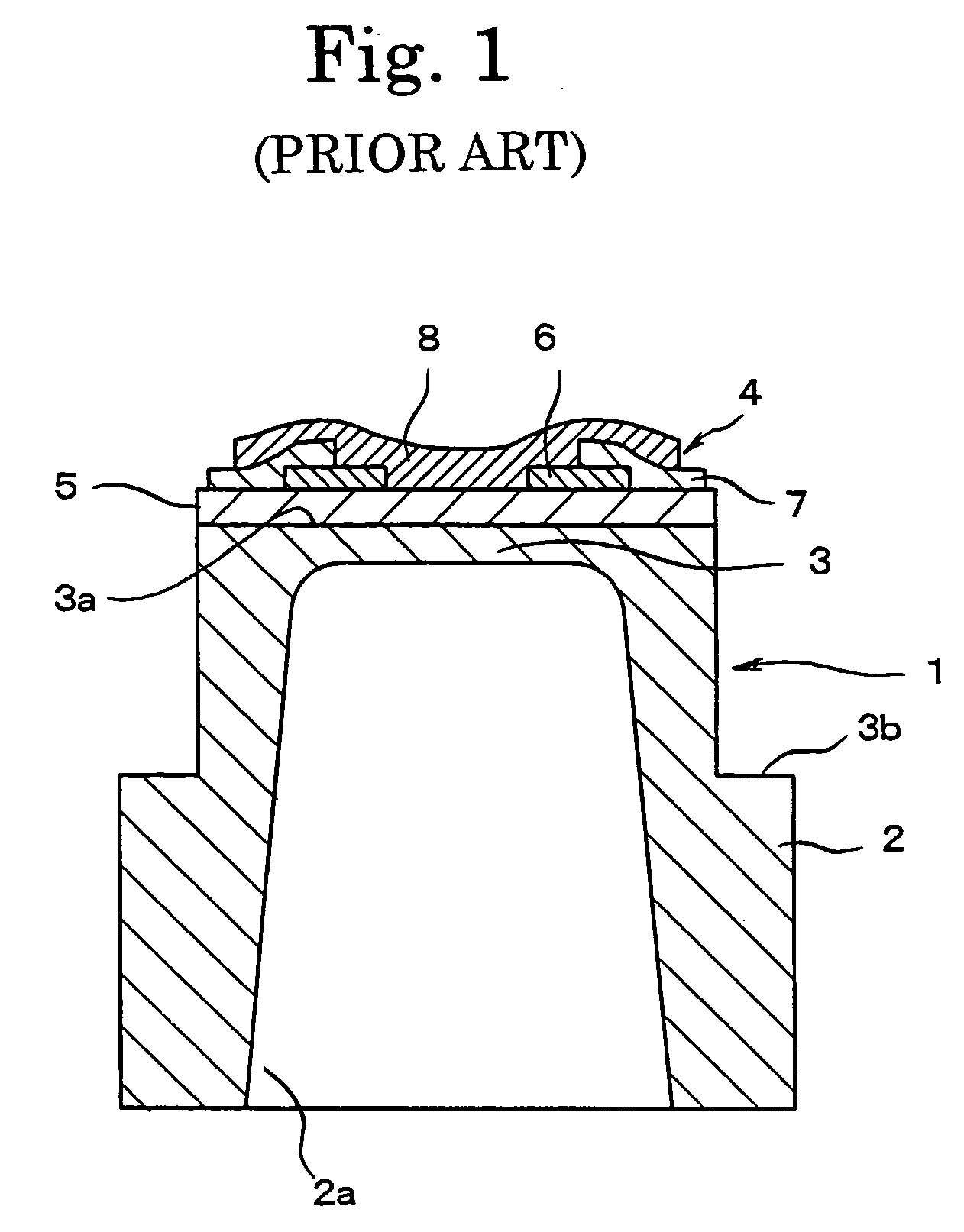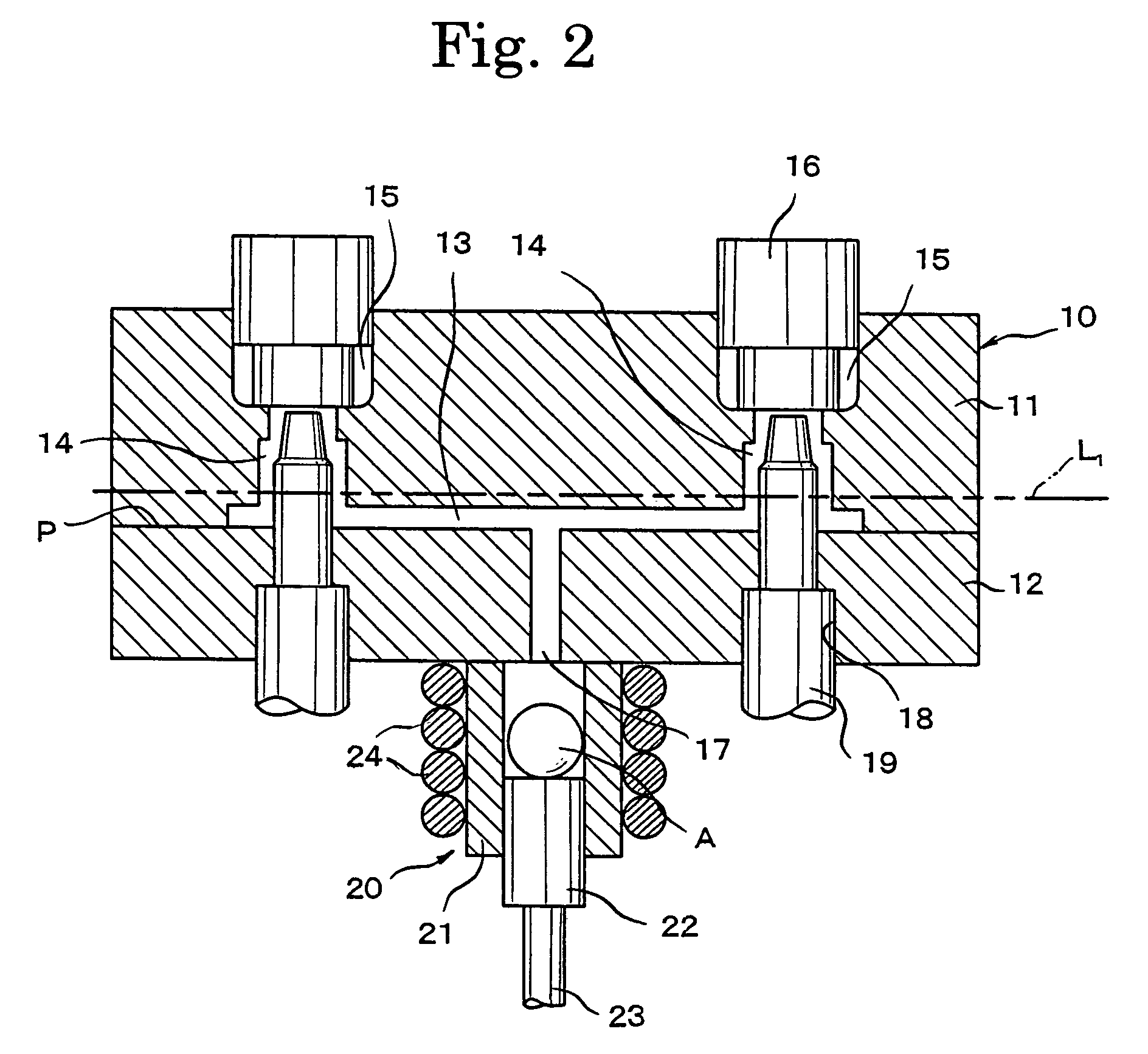Method for manufacture of a physical quantity detector
a technology of physical quantity and manufacturing method, which is applied in the direction of manufacturing tools, instruments, fluid pressure measurement, etc., can solve the problems of poor transfer of inner surface, high processing cost, and difficult maintenance of machining precision, and achieve excellent sensor characteristics, high surface smoothness, and high dimensional accuracy
- Summary
- Abstract
- Description
- Claims
- Application Information
AI Technical Summary
Benefits of technology
Problems solved by technology
Method used
Image
Examples
Embodiment Construction
[0024]As described above, in accordance with the method for the manufacture of a physical quantity detector according to the present invention, a sensor member (a cylindrical part of which one end is closed with a strain generating part) is produced by a method which comprises injecting the melt of an alloying material having a composition capable of yielding an amorphous alloy into a metal mold and cooling the molten alloy in the metal mold to confer amorphousness on the alloy, i.e. the so-called vacuum die casting process or high-pressure die casting process. The metal mold mentioned above is composed of a split mold having at least two split parts for forming a cavity and an insert pin to be inserted into the cavity so as to define the inner configuration of the cylindrical part mentioned above. In accordance with the first preferred embodiment, the metal mold is further provided with an insert core to be inserted into the mold so as to form the surface of the cavity correspondin...
PUM
| Property | Measurement | Unit |
|---|---|---|
| temperature | aaaaa | aaaaa |
| outer diameter | aaaaa | aaaaa |
| temperature | aaaaa | aaaaa |
Abstract
Description
Claims
Application Information
 Login to View More
Login to View More - R&D
- Intellectual Property
- Life Sciences
- Materials
- Tech Scout
- Unparalleled Data Quality
- Higher Quality Content
- 60% Fewer Hallucinations
Browse by: Latest US Patents, China's latest patents, Technical Efficacy Thesaurus, Application Domain, Technology Topic, Popular Technical Reports.
© 2025 PatSnap. All rights reserved.Legal|Privacy policy|Modern Slavery Act Transparency Statement|Sitemap|About US| Contact US: help@patsnap.com



